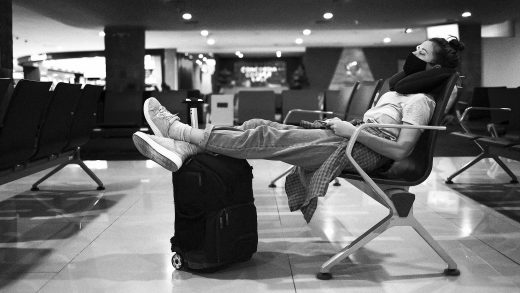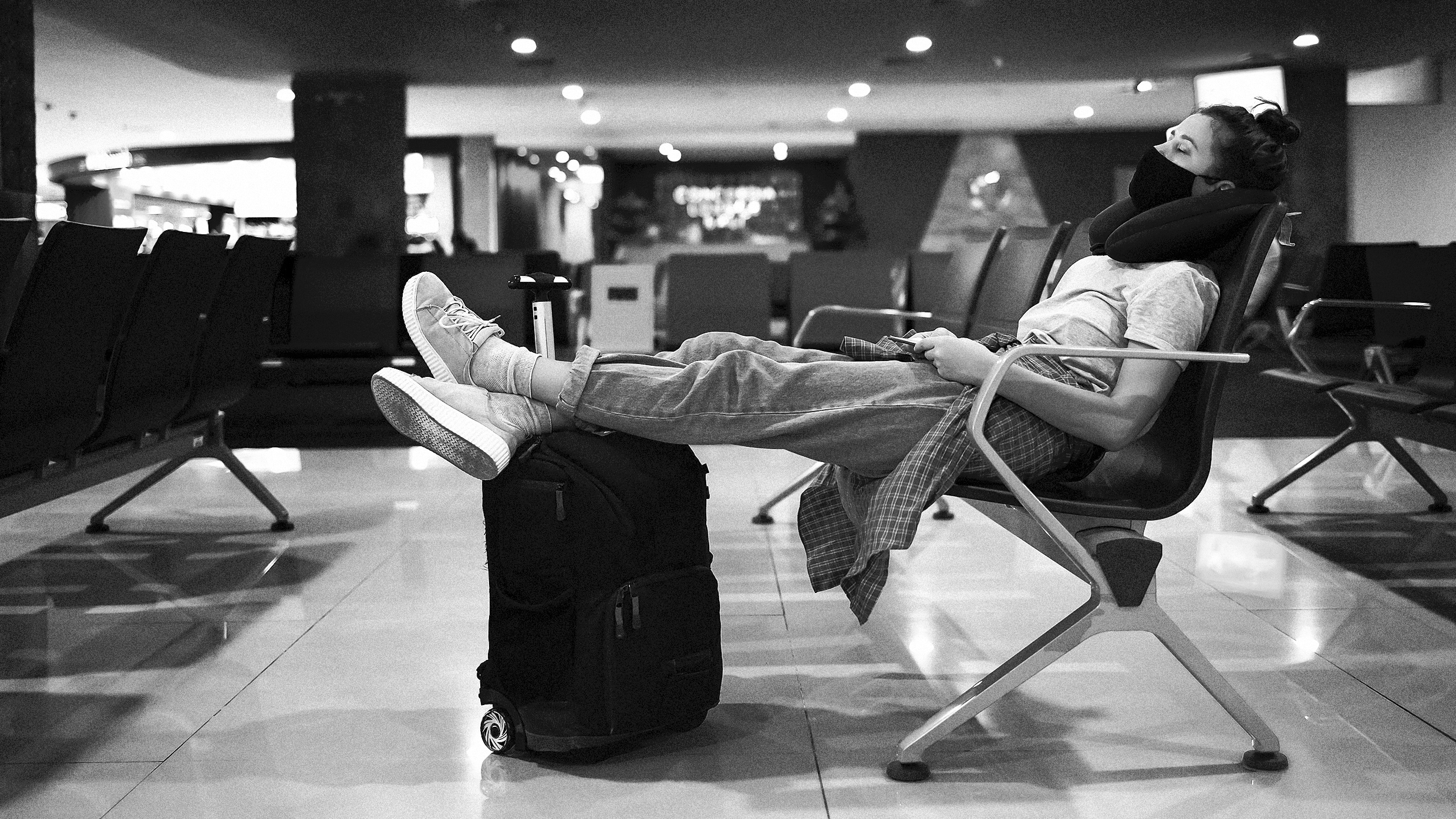The real reason you can’t find a place to sleep in an airport
Storms, heat, and a busy holiday weekend all combined into a worst-case-scenario for many air travelers in the U.S. earlier this month. People traveling for the Fourth of July holiday faced thousands of flight delays and cancellations, and many ended up spending much of their extended weekend inside the walls of an airport terminal.
What they likely weren’t doing was sleeping. Despite delays that often stretch hours and cancellations that leave travelers waiting overnight for their next flights, airports are actively designed so that people cannot sleep in them. Rows of chairs fill their gate lounges, but almost all are outfitted with immovable armrests that prevent a body going horizontal. Most of them lack even a reclining aspect to let a person lay back. This defensive architecture, like buildings or public seating with features that prevent the unhoused from sleeping, makes an unpleasant day of delayed travel that much worse.
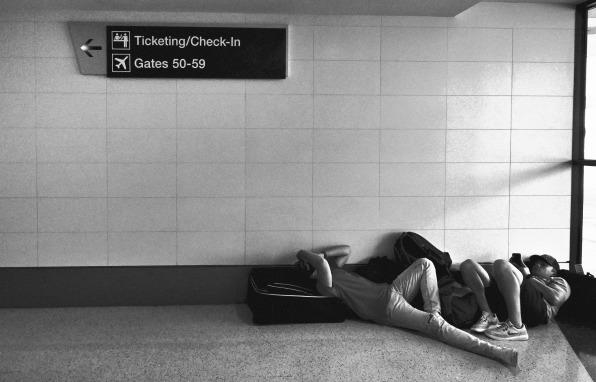
According to the airport designers we spoke with for this story, there’s a mundane rationale behind this this seemingly inhumane design choice—it’s a simple matter of real estate.
The lease
“The fundamental reason why you can’t sleep in airport gate lounges, or that it’s hard to, is they’re trying to fit as many people in that room as comfortably as they can without increasing the lease area paid by the airline,” says Matt Needham, director of aviation and transportation at the global architecture firm HOK. “It’s a cost efficiency.”
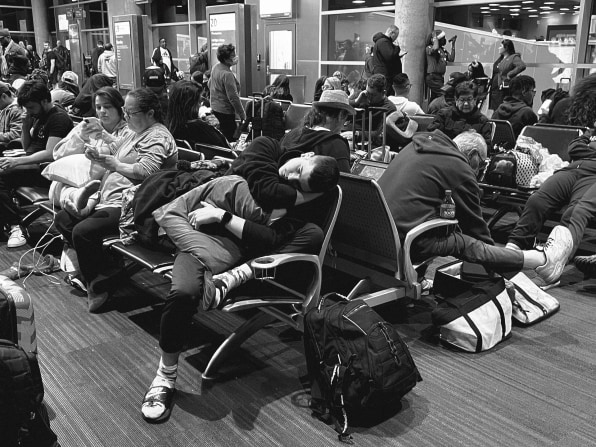
Though it may look like the common ground of an airport complex, the gate area is actually a piece of real estate that’s leased by airlines for each and every plane that lands and takes off. Many factors determine how much airlines pay for these leases, including distance from security, proximity to bathrooms, and accessibility from airline clubs, but the biggest determinant of cost is square footage. Airlines choose the amount of square footage they’ll need for the size of aircraft landing at the gate, and fill in the space with not too many but not too few chairs. “There’s always a monetary reason why those gate lounges are sized the way they are,” Needham says.
The workhorse
Though “gate lounge” is the preferred term in the industry for the waiting areas outside of gates in airport terminals, the name is something of a misnomer. “You think of soft jazz and the ability to have a cocktail or something. That’s not the function of these rooms,” says Needham. “You’re moving hundreds of people, more than one flight every hour.”
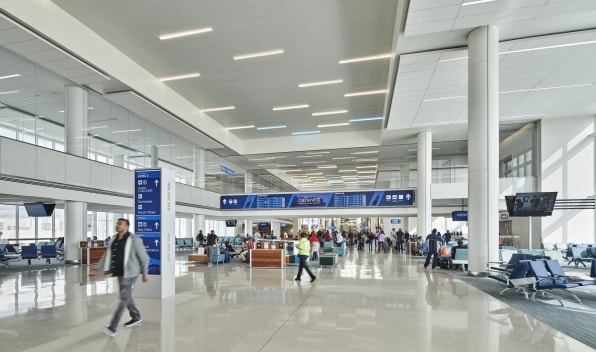
That’s why seating in gate lounges tends to be more utilitarian than lounge-like. Needham points to the typical seating seen in airports around the world: a bench of 5 to 10 seats all positioned on an underlying beam, with armrests in between, and often set back-to-back with another row of the exact same chairs. Other seat types are also used, but Needham says this beam-based design is the workhorse of the gate lounge.
They don’t necessarily have to be bad places to sleep, though. Curtis Fentress, founder of Fentress Architects, has been designing airports for 40 years, and he says many seats designed for airports often have options for reclining elements or adjustable armrests to enable easier sleep. Compared to the conventional seats, uptake on these augmented designs are minimal, partly because furniture purchases tend to be part of a separate contract from that of the airport design. “If you put a recliner piece on it, it takes more square footage for a row of chairs like that, or any other configuration,” Fentress says. “It’s not so much the cost of the chair as it is the additional square footage of the buildings that’s required.”
The formula
“There’s always this church analogy,” says Fentress.
The church analogy is all about gate lounge capacity. And even though airport authorities know there will be bad days when delays and cancellations pack lounges with people and floorspace becomes a sleeping place, the gate lounges are designed for the days that go off without a hitch. “They say, ‘We’re not building the building for Easter Sunday when everybody goes to church’,” says Fentress.
Not everyone gets a seat, though. Needham says airlines tend to plan out the square footage and seating requirements of their gate lounges using a formula, based primarily on the number of seats on the planes each gate will handle. For a typical domestic flight in the U.S., that’s about 180 people. The airlines assume flights will be about 85% full on average, and they also assume that some of those passengers will be doing something else in the airport aside from waiting by their gate. “They’re having a drink at the bar, shopping, buying a magazine, or in an airline club,” says Needham. The formula calls for enough seating to accommodate 75% of the 85% of passengers a plane can carry.
The formula results in typical gate lounges that have about 114 seats. Cramming in all those seats—which are technically not enough for even a less-than-full flight—means that extra room for a reclining seat back or wide armrest does not exist. And on the unlucky chance that a flight is cancelled and people end up sleeping in the terminal, the gate lounge can only offer insufficient seats with no way to recline and little space for anything else.
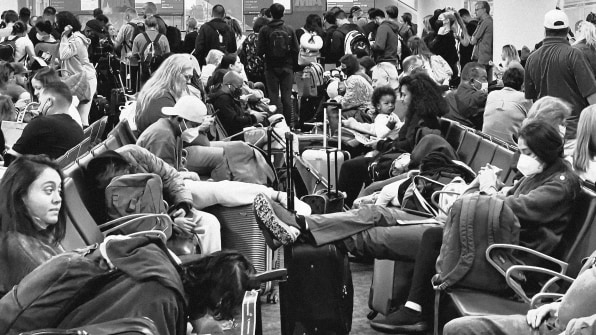
The squeeze
The problem may be getting worse. Extreme weather has caused a steadily increasing number of cancelled flights over the past two decades, and the past few years have been especially bad. Fentress says the airport industry is unlikely to let a rough summer or even a rough couple of years shift the way it plans the gate lounge spaces within massive multi-billion-dollar airports. “If you hit five years running where this was the case every year, that would start to affect how people feel about it and how they appropriate money,” he says.
In the meantime, the changing climate is not the only culprit for cramped gate lounges. In many older airports, terminal design decisions made long ago are being upended by evolving aircraft. Over the last few decades, the fuselages of airplanes have gotten longer while maintaining the same wingspan, which has historically been used to set the terms of gate lounge leases, according to Needham. “You’re putting more people in the same rough size of gate lounge that may have been built 40 years ago,” he says.
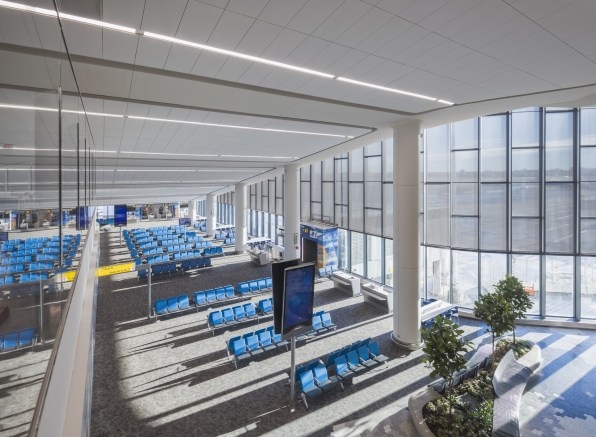
Newer airport designs are trying to address all of these issues. HOK designed the recent renovation of LaGuardia Airport’s Terminal B in New York, and Needham says special attention was paid to the layout of the gate lounges to address some of the crowding and space constraint issues of the past.
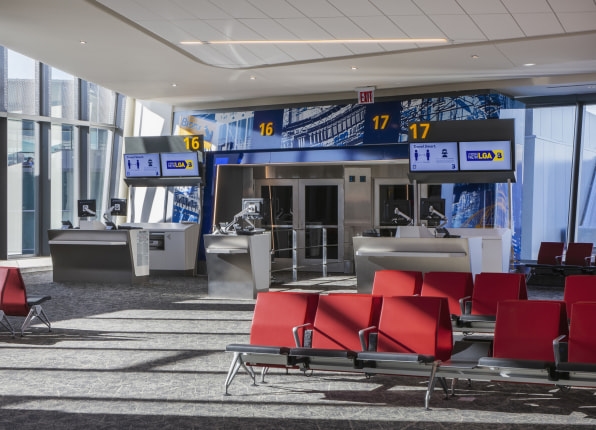
The project carved out more area for gate lounges without drastically increasing the terminal’s size by shifting where the building’s massive supporting columns stand. Moving them closer to the perimeter of the terminal freed up space on the edge of the gate lounge and its fuzzy border with the circulation space in between gates, allowing more room for a wider variety of seat types. That will come in handy when flights are more than 85% full, and for the times when cancellations leave travelers hunting for a place to try to sleep. “Modern airport design is really trying to allow for that flexibility and provide extra space,” Needham says.
The seats
New seats are gradually making their way into terminals around the world, offering travelers more ways to spend the minutes or hours waiting to get onto a flight. Needham says larger airports and major hubs are investing in a wider range of seat styles, including group seating, amorphously shaped couch-like seats, sit-stand areas where travelers can use laptops, and even chairs with integrated technology travelers can use to order food for in-terminal delivery.
Most of the changes, to the extent they are happening at all, are more subtle. Needham says he’s seen a trend of airports replacing the lines of conventional beam-based seats with newer versions that create slightly more room for the people using them. A larger buffer between seats doesn’t let people lay down or recline, but it makes sitting in between people more comfortable. “What [airports] are realizing is if they actually offer a little bit more space, like a small surface in between each seat, there’s more likelihood that you’ll sit next to a stranger than if you’re right next to them sharing an armrest,” Needham says.
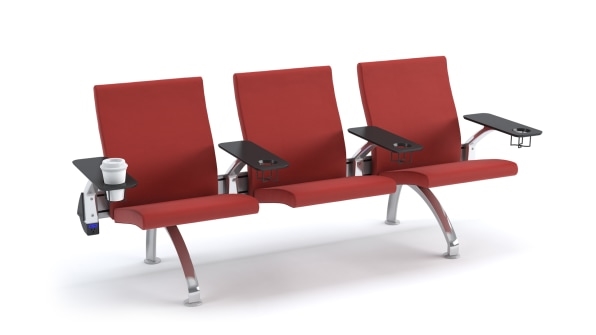
One such design was developed by Fentress’ firm. The Place chair system looks like a typical row of gate lounge seats, but in between each seat is a six-inch-wide flat surface where users can rest an arm, a laptop or a drink. An optional 20-inch wide table can also be added within rows. It may not recline, but the design enables more comfortable sitting for people in tight quarters with fewer of the wasted seats seen in typical gate lounge chairs.
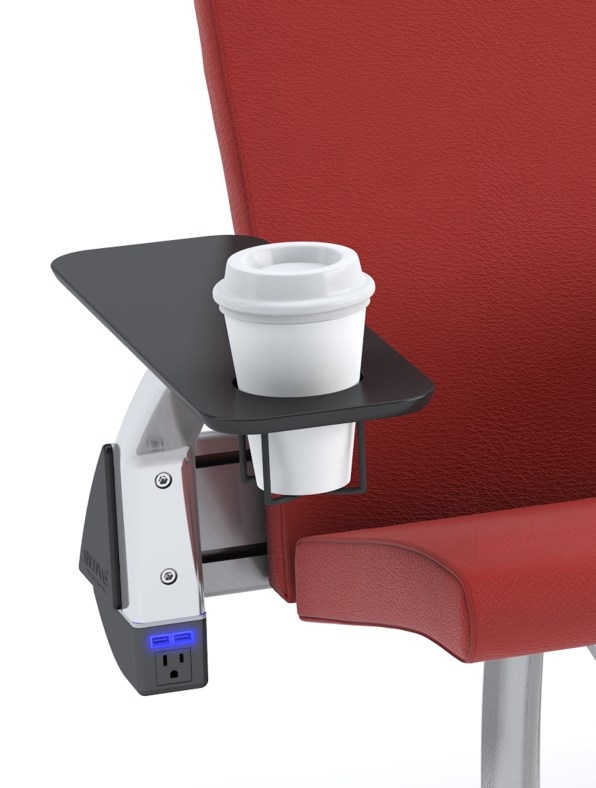
More comfortable seat options in airports are emerging, albeit slowly. Even Fentress sometimes wishes airports were designed to allow more comfortable sleep. He’s a seasoned traveler with more than 5 million miles traveled on United Airlines alone, so he’s experienced his share of delays. Ahead of this year’s cancellation-stricken July Fourth holiday, he had delays on three flights that added up to 15 hours of time to kill in airports across the U.S. A place to kick back for a while, he concedes, would have been nice.
But Fentress also sees these incidents as outliers, the Easter Sunday conditions that airports aren’t likely to be designed around. “Since I’m in the business of designing airports, I think of it in the macro scale and in how it affects me personally,” he says. “I just suck it up. It’s a bad week. It’s not the end of the Earth.”
(15)

